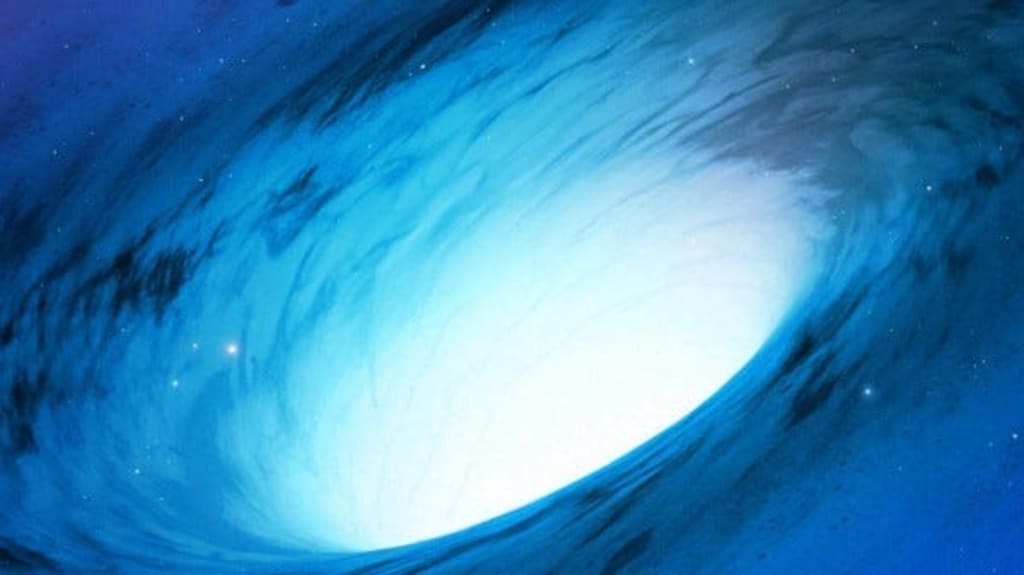
In the cosmic tapestry of the universe, few phenomena captivate the imagination as profoundly as black holes. These enigmatic entities represent celestial whirlpools of gravitational death, where the laws of physics as we understand them seem to reach their limits. They are cosmic objects of such intense gravity that nothing, not even light, can escape their clutches once they cross a critical boundary known as the event horizon.
However, in the midst of this cosmic maelstrom, scientists have pondered the existence of a mysterious twin to the black hole: the white hole. While black holes are known for their voracious appetite for matter, compressing everything they ingest into an infinitely minuscule singularity at their center, white holes are postulated to be their polar opposites. Instead of consuming matter, a white hole would continually expel it back into the universe, a beacon of creation rather than destruction.
This cosmic yin and yang has led some to speculate that white holes could be the flip side of the black hole coin, connected in a way that transcends our current understanding of the universe's fabric. Whereas a black hole's immense gravity is derived from the mass condensed into its singularity, white holes remain shrouded in mystery, their existence largely theoretical.
Every black hole, regardless of its origin, is surrounded by an event horizon. This boundary is the Rubicon of spacetime, the point of no return for anything unfortunate enough to cross it. To escape the clutches of a black hole once within this realm, an object would need to achieve a velocity surpassing the speed of light—an impossibility according to our current understanding of physics.
In stark contrast, a white hole's event horizon functions as an impenetrable barrier to incoming matter. While a black hole's event horizon is an inescapable gravitational snare, a white hole's serves as a one-way gateway, forever closed to those seeking entry. This unique dichotomy forms the basis for the tantalizing theory that white holes may be intimately connected to black holes, two sides of the same cosmic coin.
Despite decades of astronomical exploration and the recent monumental achievement of capturing an image of a black hole, evidence for the existence of white holes has remained frustratingly elusive. Yet, the tides may be turning, as scientists have recently detected mysterious gamma rays appearing in unexpected regions of the cosmos.
Gamma-ray bursts are among the most energetic events in the universe, transient outbursts of gamma-ray radiation that rival the brightness of hundreds of supernovae. They are typically associated with the birth of black holes, heralding the formation of these cosmic behemoths. However, a particular gamma-ray burst, designated as grb060614, defied conventional expectations. Unlike its counterparts, it emerged seemingly out of nowhere, only to rapidly collapse upon itself. Moreover, its duration of approximately 100 seconds belied its behavior, behaving more like a shorter burst.
This anomalous gamma-ray burst, lacking the customary afterglow associated with black holes, has ignited speculation among scientists that it may be the elusive signature of a white hole. Could this be the long-awaited evidence that confirms the existence of these enigmatic cosmic entities?
Venturing into the realm of a hypothetical white hole, however, would be a perilous endeavor. Approaching a white hole would subject a spacecraft to a barrage of gamma rays of unparalleled intensity, capable of obliterating it and everything aboard. Even with hypothetical advanced gamma-ray shielding—technology yet to be realized—crossing the white hole's event horizon would remain an insurmountable challenge. The relentless force of gamma radiation would create an environment akin to battling intense air resistance, impeding progress at every turn.
To traverse the singularity at the heart of a white hole, one would need to overcome not only the overwhelming forces of gamma radiation but also the unimaginably potent gravitational pull working against any forward movement. In essence, the journey would require defying the cosmic speed limit, surmounting the speed of light itself—a feat currently deemed impossible by our understanding of the laws of physics.
The possibility of accessing a white hole may hinge on the existence of a hypothetical wormhole linking it to its black hole counterpart. This theoretical conduit could serve as a potential pathway, yet it would be a precarious route to navigate. The entire structure of the wormhole might collapse unpredictably, posing a considerable risk to any intrepid traveler attempting the journey.
Emerging from the event horizon of a black hole would be an extraordinary experience, marked by intense bursts of light and distortions in perception due to relativistic effects. Overcoming the immense gravitational pull, which would stretch the traveler thin in a phenomenon known as reverse spaghettification, would be an awe-inspiring accomplishment.
Ultimately, this hypothetical odyssey through a black hole and a white hole would be a profound and potentially paradigm-shifting endeavor. Upon emerging from the white hole, one could find themselves in an entirely different region of our universe or even in a separate universe altogether—a testament to the mind-bending possibilities that the cosmos may hold.
Considering the monumental implications of such a journey, it is imperative to approach the notion with a healthy dose of caution and skepticism. While the theoretical framework provides a tantalizing avenue for exploration, the inherent risks and uncertainties underscore the boundless mysteries that continue to beckon from the depths of the cosmos.
About the Creator
Enjoyed the story? Support the Creator.
Subscribe for free to receive all their stories in your feed. You could also pledge your support or give them a one-off tip, letting them know you appreciate their work.





Comments
There are no comments for this story
Be the first to respond and start the conversation.